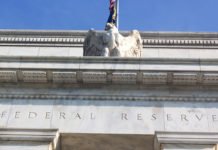The FOMC minutes for the meeting in May unveiled that the members remained optimistic about the economic outlook. They also viewed that soft inflation was a transitory phenomenon. These resulted in the judgment that “a patient approach” to monetary policy decision remains appropriate and the policy rate should stay unchanged “for some time”. Note, however, that the meeting, held on May 1, predated Donald Trump’s announcement to raise tariff (to 25%) on US$200B of Chinese exports. It is possible that the Fed would turn more cautious over the economic outlook at the June meeting, when the members take into account the effects of recent re-escalation of US-China trade war.
Recall that, in the policy statement, the Fed delivered a slightly upbeat tone on economic developments due to upside surprise in first quarter growth and activity data. This was consistent with the upgrades in staff’s projections. As affirmed in the minutes, the upward revision in medium-term GDP growth “primarily reflecting a lower assumed path for interest rates, a slightly higher trajectory for equity prices, and somewhat less appreciation of the broad real dollar”. GDP was forecast to “expand at a rate above the staff’s estimate of potential output growth in 2019 and 2020 and then slow to a pace below potential output growth in 2021”.
While the majority judged that low inflation was driven by temporary factors, some of them raised concerns about the increasing downside risks. The members generally viewed that recent weak inflation was “at least” partly attributed to “idiosyncratic factors that seemed likely to have only transitory effects on inflation”. These factors include “unusually sharp declines in the prices of apparel and of portfolio management services”. While members continued to expect that inflation would “most likely” stay near the +2% target, “some” were concerned about the increasing downside risks to inflation. Meanwhile, “some expressed concerns that long-term inflation expectations could be below levels consistent with the Committee’s +2% target or at risk of falling below that level”. The Fed described the job market as “tight” and remained confident that the unemployment rate would “decline a little further below the staff’s estimate of its longer-run natural rate and to bottom out in late 2020”.
Against the backdrop of “moderate economic growth and muted inflation pressures”, there was broad agreement to leave the monetary policy unchanged for now. As the minutes suggested, “participants generally agreed that a patient approach to determining future adjustments to the target range for the federal funds rate remained appropriate”. The patience stance signaled that the Fed would adopt a wait- and- see approach on its future monetary policy decision which would be highly date-dependent.












